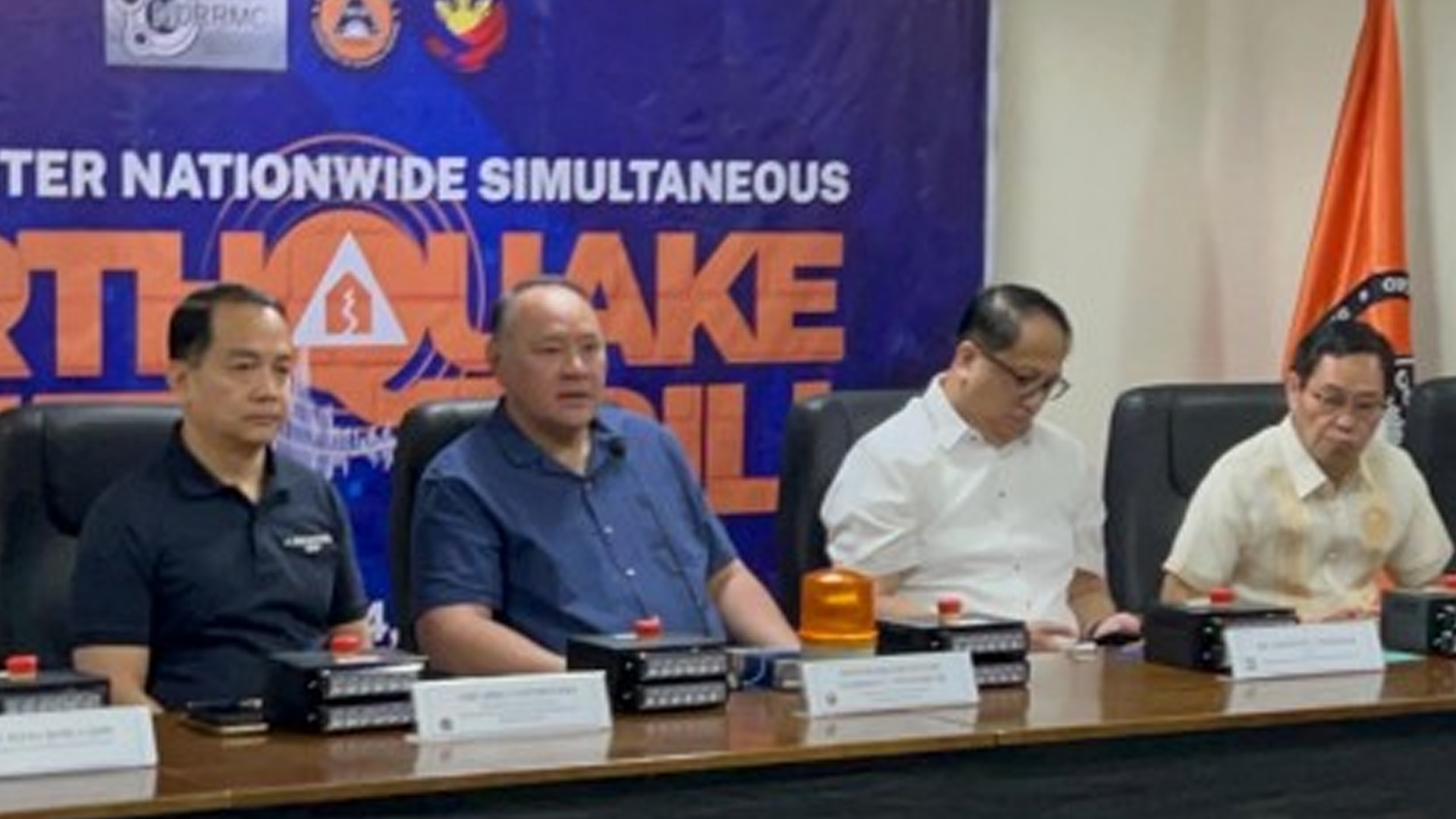The quarterly National Simultaneous Earthquake Drill (NSED) aims to enhance the “conditioned response” of Filipinos for sudden tremblors and other disasters, Department of National Defense (DND) Secretary Gilberto Teodoro Jr. said on Monday.
“Every quarter po ay ginagawa po itong NSED, upang, numero uno, magkaroon ng ‘conditioned response’ ika nga o ‘automatic response’ ang ating mga mamamayan sa ‘duck, cover, and hold’ na kanilang kailangan gawin tuwing meron lindol (We are doing every quarter, we are doing the NSED, number one, to ensure that our citizenry will have the ‘conditioned response’ or ‘automatic response’ to immediately do the ‘duck, cover, and hold’ should an earthquake suddenly strikes),” Teodoro said during the briefing for the First Quarter NSED at Camp Aguinaldo, Quezon City.
Teodoro, also chair of the National Disaster Risk Reduction and Management Council chair, said the NSED also seeks to brief and train on their responsibilities “safety and evacuation officers” who are serving as “shepherds” and tasked to immediately move out people safely out of buildings and other structures should a massive quake occur.
This also includes “barangay” or village officials who are responsible for communities of people and individuals who are tasked to secure the welfare and well-being of other groups.
Teodoro said these people have a heavier responsibility as they need to ensure that everyone in their charge is capable of performing these life-saving drills when needed and bring them to the evacuation areas immediately.
The DND chief said more scenarios will be implemented in the coming NSEDs to test the fast and effective response to the disaster.
Teodoro asaid this gives them an opportunity to determine what is lacking, giving them a chance to further improve government response mechanisms.
Monday’s NSED scenario had a magnitude 7.2 earthquake occurring due to the movement of the West Valley Fault and heavily affecting Metro Manila, Calabarzon, and Central Luzon around 9 a.m.
In the scenario, Metro Manila suffered the most damage and experienced “regional separation”.
A camp-wide evacuation drill was conducted, followed by communication exercises, that showed and tested the government’s coordination mechanisms following this earthquake. (PNA)







